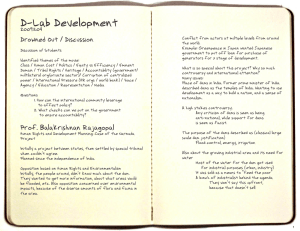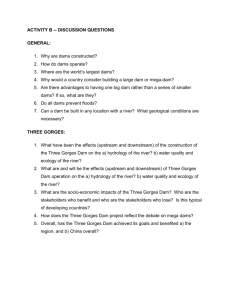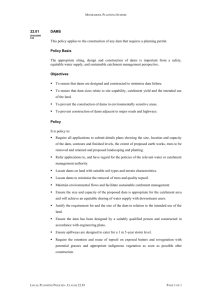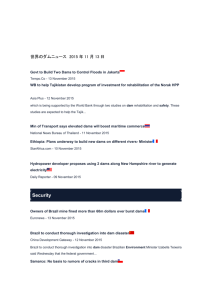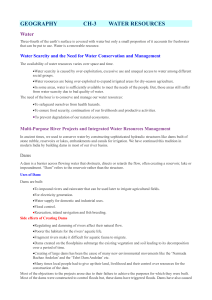Hydro-Electricity Backgrounder
advertisement
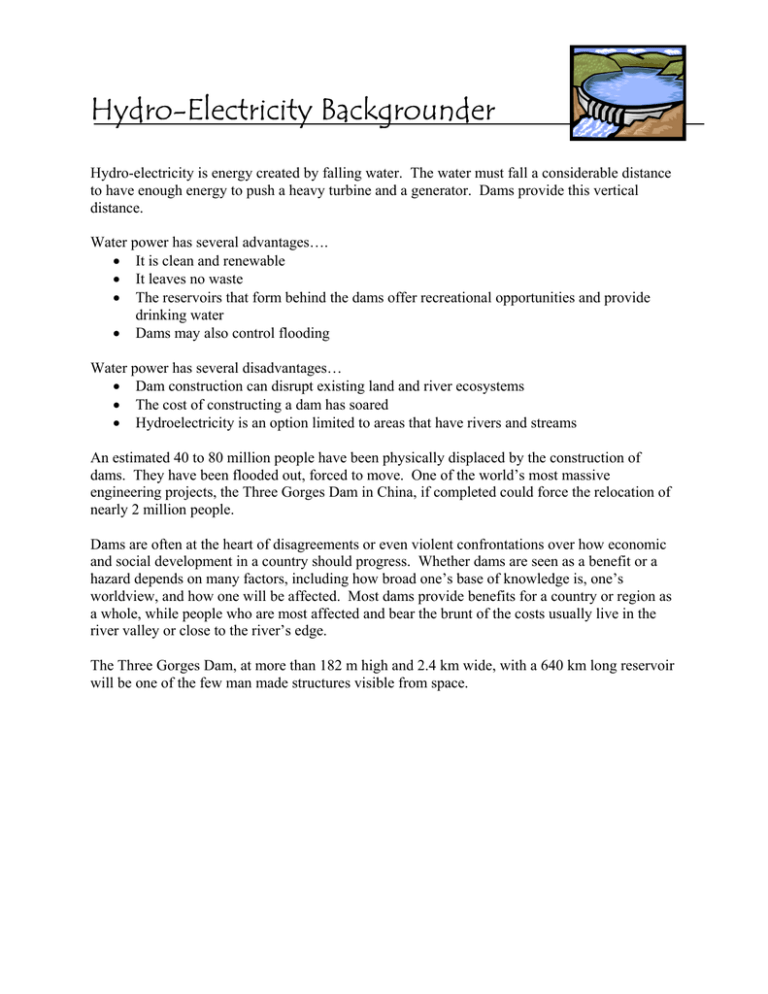
Hydro-Electricity Backgrounder Hydro-electricity is energy created by falling water. The water must fall a considerable distance to have enough energy to push a heavy turbine and a generator. Dams provide this vertical distance. Water power has several advantages…. • It is clean and renewable • It leaves no waste • The reservoirs that form behind the dams offer recreational opportunities and provide drinking water • Dams may also control flooding Water power has several disadvantages… • Dam construction can disrupt existing land and river ecosystems • The cost of constructing a dam has soared • Hydroelectricity is an option limited to areas that have rivers and streams An estimated 40 to 80 million people have been physically displaced by the construction of dams. They have been flooded out, forced to move. One of the world’s most massive engineering projects, the Three Gorges Dam in China, if completed could force the relocation of nearly 2 million people. Dams are often at the heart of disagreements or even violent confrontations over how economic and social development in a country should progress. Whether dams are seen as a benefit or a hazard depends on many factors, including how broad one’s base of knowledge is, one’s worldview, and how one will be affected. Most dams provide benefits for a country or region as a whole, while people who are most affected and bear the brunt of the costs usually live in the river valley or close to the river’s edge. The Three Gorges Dam, at more than 182 m high and 2.4 km wide, with a 640 km long reservoir will be one of the few man made structures visible from space. The World’s Controversial Dam Projects


